
Anselm Kiefer. Auguste Rodin: Les Cathédrales de France (August Rodin: The Cathedrals of France), 2016. © Anselm Kiefer. Photo by Georges Poncet
About the Exhibition
Kiefer Rodin presents new works by renowned German artist Anselm Kiefer (b. 1945) inspired by the sculptures, drawings, and writings of French sculptor Auguste Rodin (1840–1917). Organized with the Musée Rodin, Paris, the exhibition marks the 100th anniversary of Rodin’s death and is part of a worldwide series of tributes to the artist.
In 2013, the Musée Rodin began exploring the idea of revisiting Rodin’s Cathedrals of France—an important book written by the sculptor in 1914—through the lens of a contemporary artist. Kiefer, already intrigued by Rodin’s plasters, took on the project and transformed plans for a reissue of the book into a full-fledged exhibition for which he would create a whole new body of work.
In Kiefer Rodin, the German artist’s new works are placed in dialogue with sculptures and drawings by Rodin, including several rarely displayed plasters, with the goal of opening up new ways of thinking about both artists.

Spare Arms, Hands, and Bones
Auguste Rodin. Undated.

Berthe au Grand Pied (Bertha Broadfoot)
Anselm Kiefer. 2016. Photo by Georges Poncet
Kiefer Rodin centers on two major threads connecting these artists: a shared interest in architectural ruins and a creative process rooted in the idea of mutability. In Cathedrals of France, the book that sparked this exhibition, Rodin lamented the abandonment of France’s historic cathedrals, especially Gothic cathedrals, which he regarded as major achievements in human history and sources of inspiration for his own art. This theme of ruins and national identity is at the core of Kiefer’s practice, most famously expressed in his enormous, devastating paintings confronting Germany’s troubled past.
Rodin’s artistic methods were also of great interest to Kiefer. The most radical sculptor of his time, Rodin created bodily forms that appeared rough and unfinished by traditional standards. They revealed—rather than covered up—the messiness of the creative process. Rodin kept sculptural fragments (arms, legs, heads) around his studio that he would continually assemble and reassemble to create new works of art. Because his own practice can be described as a constant process of disassembling and reconfiguring, Kiefer found a new and almost urgent relevance in Rodin’s work.
Auguste Rodin: Sculptures, Drawings, and Watercolors
The large plaster sculptures on view—including Crouching Woman (1906–1908) and Meditation Without Arms, but with Left Knee (after 1900)—convey Rodin’s embrace of the fragmented form and his raw, sensual approach to depicting the female body. Also featured are assemblages from Rodin’s studio, including a selection of small sculptures in which the artist combined fragments from his previous creations with antiques and discarded materials.
Rodin kept records of his visits to France’s great cathedrals, penciling notes and sketches in his notebooks, some of which are included in the exhibition. His drawings and watercolors explore the relationship between architecture and the human body, continuing a tradition dating from antiquity.

Iris, Messenger of the Gods
Auguste Rodin. 1891–93.
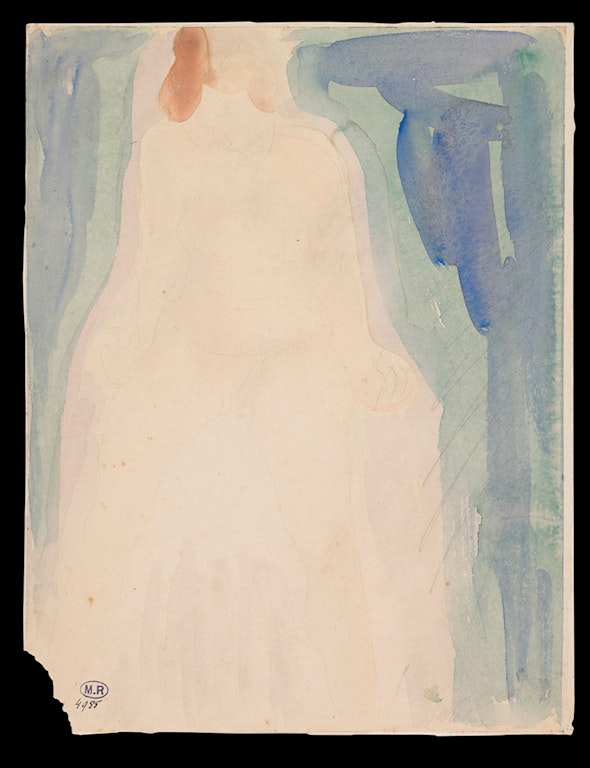
Seated Female Nude with Legs Apart, Front View
Auguste Rodin. Undated.
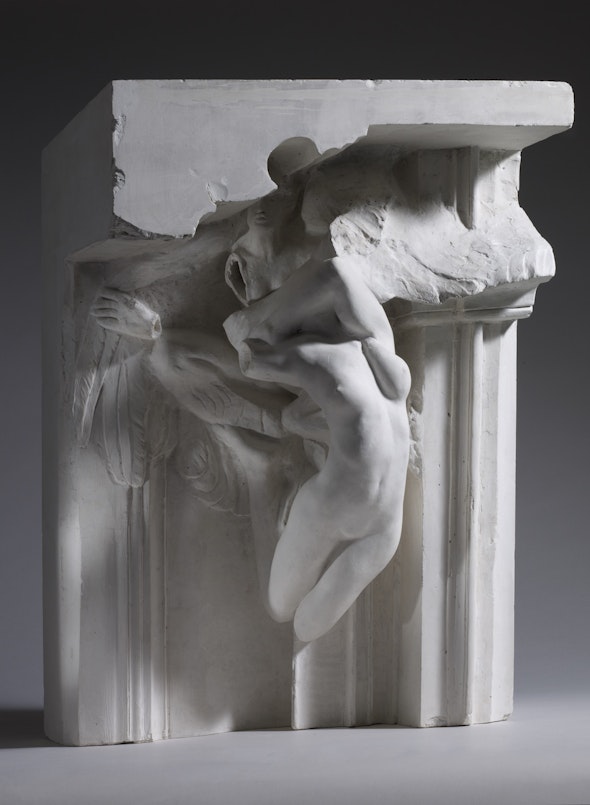
Torso of Adèle
Auguste Rodin. c. 1890–1900. Photo by Christian Baraja
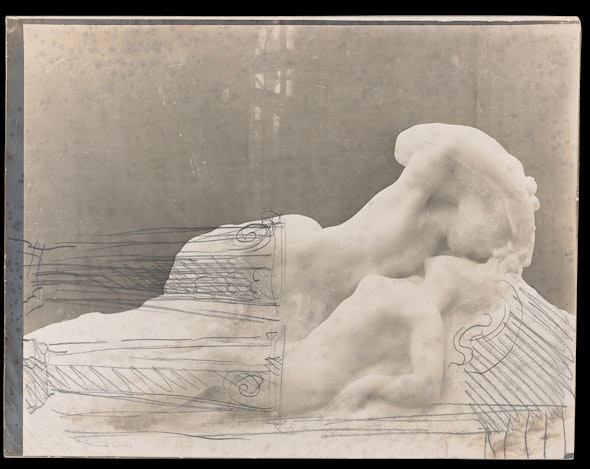
Girl Kissed by a Phantom
Auguste Rodin. 1900. Photo by Eugène Druet
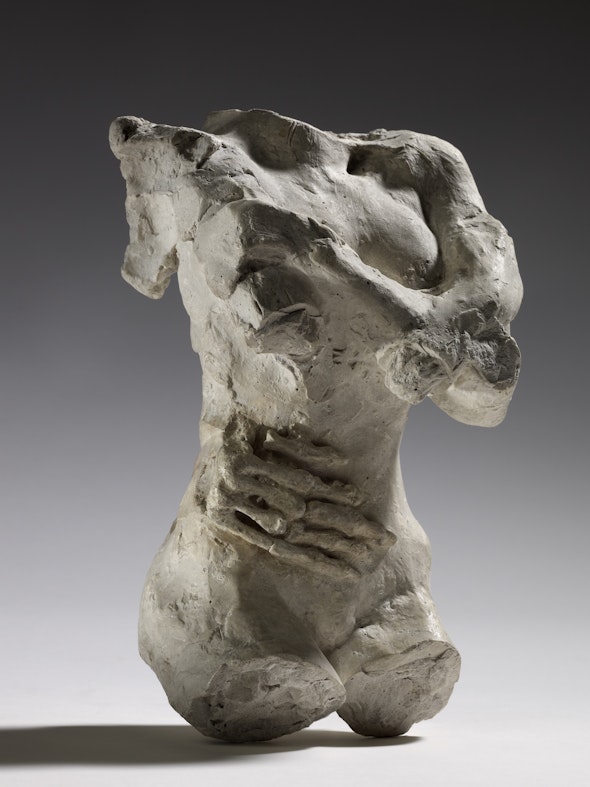
Female Torso with Skeleton Hand on Belly
Auguste Rodin. 1883–84.
Anselm Kiefer: Illustrated Books, Vitrines, and Paintings
Following in Rodin’s footsteps, Kiefer visited several cathedrals and created illustrated books in which buildings are again closely associated with the female body and charged with eroticism.
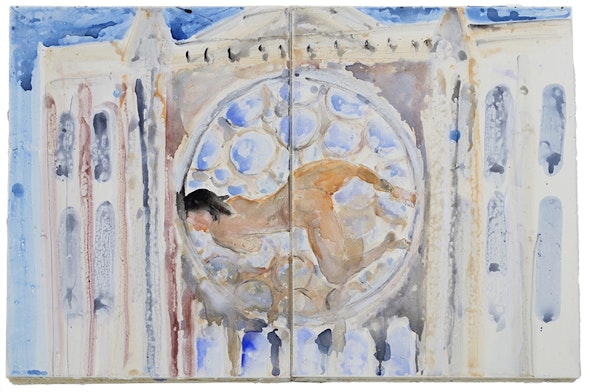
Les Cathédrales de France (The Cathedrals of France)
Anselm Kiefer. 2013. Photo by Charles Duprat
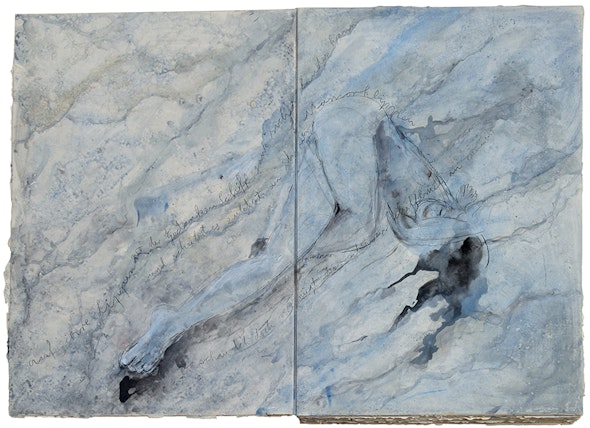
Marmorklippen (Marble Cliffs)
Anselm Kiefer. 2014. Photo by Charles Duprat
Inspired by the molds and fragments left in Rodin’s studio, Kiefer assembled a number of vitrines—large glass cabinets housing multimedia arrangements—combining equivalents of plaster molds from Rodin’s work with unexpected materials and relics from his own life.

Emanation
Anselm Kiefer. 2016. Photo by Georges Poncet
Architecture has long played a key role in Kiefer’s work as a metaphor for the cycle of birth and death. In Auguste Rodin: The Cathedrals of France, a series of monumental paintings paying homage to Rodin’s original book, the towers Kiefer renders are blackened and seem to disappear, swallowed up by the materials of the painting.
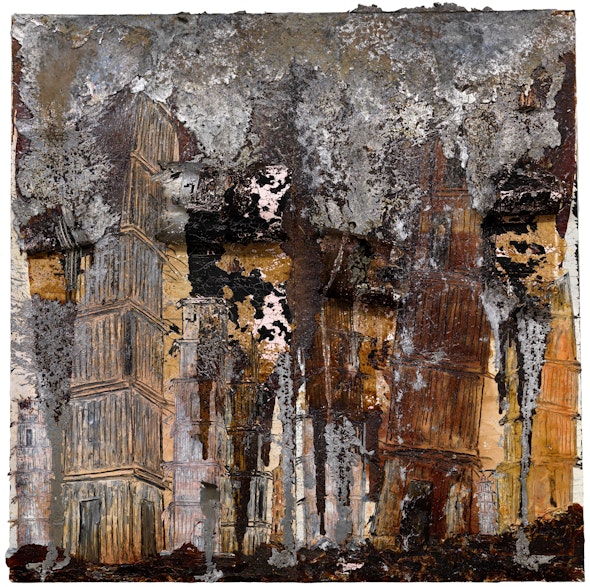
Auguste Rodin: Les Cathédrales de France (August Rodin: The Cathedrals of France)
Anselm Kiefer. 2016.
Rodin and Philadelphia
Kiefer Rodin is part of the worldwide initiative taking place in 2017 commemorating the centennial of Auguste Rodin’s death. Also included in this series of major Rodin projects—all unified under the hashtag #Rodin100—is The Kiss installation at Philadelphia’s Rodin Museum, located next to the Barnes on the Parkway. The museum is home to over 140 bronzes, marbles, and plasters, representing every phase of Rodin’s career, and the new installation explores the artist’s intimate and powerful depictions of romantic love.
The collaboration between the Barnes and the Musée Rodin, along with the incredible Rodin offerings at the Philadelphia Museum of Art and the Rodin Museum, offers an unprecedented, in-depth exploration of the Rodin’s work. In 2017, Philadelphia will be the destination to see the largest gathering of the artist’s work in the US.
Exhibition Organization
Kiefer Rodin, organized by the Barnes Foundation and the Musée Rodin, Paris, is a curatorial collaboration between Sylvie Patry, consulting curator at the Barnes Foundation and deputy director for curatorial affairs and collections at the Musée d’Orsay, and a team of curators at the Musée Rodin: Catherine Chevillot, director, and Véronique Mattiussi, in charge of the Rodin archives, with the collaboration of Sophie Biass-Fabiani and Hélène Marraud.
Sponsors
With generous support from:
N. Judith Broudy
Marina Kellen French Foundation
FS Foundation
Jane and Leonard Korman
Maribeth and Steven Lerner
Hilarie and Mitchell Morgan
Pincus Family Foundation
Lyn M. Ross
Keith L. and Katherine Sachs
Bruce and Robbi Toll
The exhibition catalogue is made possible with funding from the Gagosian Gallery.
Additional support for the exhibition comes from contributors to the Barnes Foundation Exhibition Fund:
John Alchin and Hal Marryatt
Jill and Sheldon Bonovitz
Lois and Julian Brodsky
Laura and Bill Buck
Joan Carter and John Aglialoro
Dan and Monica DiLella
Eugene and Michelle Dubay
Lisa D. Kabnick and John H. McFadden
Marguerite and Gerry Lenfest
Victoria McNeil Le Vine
Leigh and John Middleton
Leslie Miller and Richard Worley Foundation
Jeanette and Joe Neubauer
Kay and Michael Park
Aileen and Brian Roberts
Adele and Harold Schaeffer
Katie and Tony Schaeffer
van Beuren Charitable Foundation
Kirsten White
A. Morris Williams, Jr.
Michele Plante and Robert N. Wilson
Anonymous
Additional funding from the Horace W. Goldsmith Foundation, the Jill and Sheldon Bonovitz Exhibition Fund, Dolfinger-McMahon Foundation, The Rittenhouse Hotel, and other individual donors.

